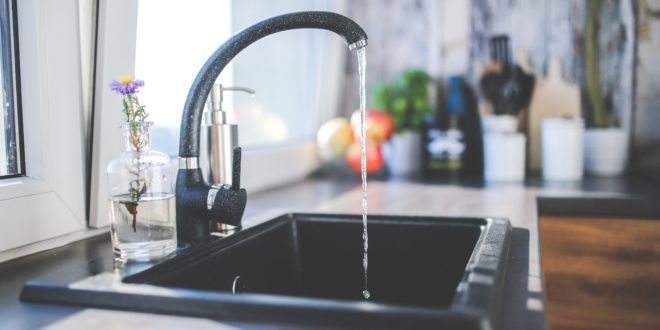As much as 97.5% of the world’s water is trapped in oceans and seas, and it’s oversalted for human use. The remaining 2.5% is in the ice caps, so we practically depend on whatever fresh water is available making it an essential life resource.
Besides drinking, we need fresh water for washing, cooking and cleaning. It’s also essential in crop production, livestock and biofuels. With the constant rise in demand, there’s a great strain on the fresh water supply. Moreover, summer is just around the corner and as much as some people are looking forward to warmer weather, others are expecting the worst drought in living memory with the arrival of hot days. Conserving water has become more important than ever before and regardless of where you live, everyone has the capacity to contribute to the water consumption in and around the home.
Save Water in the Kitchen
When it comes to wasting water in the kitchen, the biggest culprit is you! Too many people rinse dishes thoroughly before putting them in a dishwasher, which is unnecessary as dishwashers are designed to do that job well. So, the first water-saving hack is not to rinse the dishes as your kitchen faucet can use up to 3 gallons of water per minute when running full blast. Comparably, Energy Star labelled dishwashers use between 4 to 6 gallons per cycle. Plus, they work more efficiently when fully loaded.
On hot summer days, keep drinking water in the fridge instead of running the tap until it’s cool enough. Designate one water bottle per family member so everyone can easily stay hydrated and chilled during the summer heat. You can also install a water sensor on your kitchen faucet aerator to reduce flow to less than 1 gallon per minute.
Water Consumption in the Bathroom
Your bathroom is the biggest water consumer in your house. It accounts for more than half of all indoor water consumption. However, plumbing technology advances have brought forth new types of faucets, showers, and toilets that use much less water than older models without compromising the flow.
If you need to replace a bathroom fixture, opt for the one that has a label indicating it meets EPA’s water-saving standards. Replacing leaky and inefficient faucets with new water-saving aerators can save you up to 500 gallons of water per year. Replace all old toilets, too. They typically use as much as 6 gallons per flush whereas new models do the same job with 1.28 gallons or less. In this way, you can reduce your bathroom water use by 20 per cent per toilet on average.
Furthermore, you should make the effort to take shorter showers, up to 5 minutes. Turn off the water when soaping up or shampooing, and do the same when brushing your teeth or shaving. Replace your old, inefficient showerheads with smart showerhead models that are designed to use no more than 2 gallons per minute.
You may have noticed that your drains get blocked sometimes, or you have leaks that may indicate cracked or broken pipes. This might mean it is time to consider pipe relining. This is a much more convenient and affordable solution than pipe replacement. This is a relatively new technology in the plumbing industry. It offers a trenchless pipe lining solution where your leaking or broken pipes get repaired while keeping the underground pipes intact. The process of pipe relining creates a completely new and stronger repair point than digging up the pipes would do.
Save Water Outdoors
A lush grassy lawn soaks up huge amounts of water and homeowners tend to overwater it so it stays green. However, the truth is that a formed lawn only needs about 1 inch of water per week during the growing season, so overwatering can do more harm to your turf, the environment and your budget.
Start mowing your grass higher, at about 3 and 4½ inches tall as longer blades of grass shade each other, and reduce evaporation. You can also reduce the size of your lawn, add areas of mulch, plant drought-tolerant plants, or ornamental grasses. Keep fertilization at a minimum as it promotes grass growth. Leave grass clippings on the lawn to lock in moisture and add nitrogen.
Collect rainwater in barrels or install gutters and downspouts to use the runoff to water your plants and trees.Switch to drip irrigation for slow and even water distribution and water early in the morning when evaporation rates are minimal and more water can be absorbed.
In addition to air, water is the most crucial element for the sustenance of life. Unfortunately, it’s a finite commodity and if we don’t manage its consumption properly, the world will have shortages soon. Conserving water at home using the tips listed here can go a long way to contribute to global efforts that can alleviate these impending shortages.



